The formula to make a Major scale is the same for every single Major key. The I, IV, and V are the only major chords in a traditional major scale. The remaining chords are minor with the exception of the 7th which is diminished. The scale numbers would look like this I ii iii IV V vi vii I. For example in the key of C the scale would be CDEFGABC. Since triad chords are built by using every other note from the one you begin on - a C Major chord would be CEG.
The 1st note is called the root, after that you count steps away, starting with C - making the 3rd E. G is then 5 steps away from the root making it the 5th. You can keep extending chords making 6th, 7th, 9th, 11th, 13th chords, and sus4 chords. You also need to know that you can raise and lower notes if desired in the chords you're writing.
If you see a C7#9 it means you raise the 9th a half step. The key of E♭ Minor has a key signature of 6 flats (B♭, E♭, A♭, D♭, G♭, and C♭). Minor keys, along with major keys, are a common choice for popular music.
The three most important chords, built off the 1st, 4th and 5th scale degrees are all minor chords (E♭ minor, A♭ minor, and B♭ minor). This step shows how to identify the notes and the name of a triad chord whose root note is the 7th scale degree of the Eb natural minor scale. This step shows how to identify the notes and the name of a triad chord whose root note is the 6th scale degree of the Eb natural minor scale. This step shows how to identify the notes and the name of a triad chord whose root note is the 5th scale degree of the Eb natural minor scale.
This step shows how to identify the notes and the name of a triad chord whose root note is the 4th scale degree of the Eb natural minor scale. This step shows how to identify the notes and the name of a triad chord whose root note is the 3rd scale degree of the Eb natural minor scale. This step shows how to identify the notes and the name of a triad chord whose root note is the 2nd scale degree of the Eb natural minor scale. This step shows how to identify the notes and the name of a triad chord whose root note is the 1st scale degree of the Eb natural minor scale. This is one of the chord trees that will aid in the writing and analysis of music.
You can move down the tree but you may not retrograde until reaching the bottom. There are, of course exceptions including cadencing using the IV to I which is called the Amen cadence because of its use in older church hymns. At the end of a hymn people would sing Amen from the IV to I. A good example of a song that uses an amen cadence is "Let it be" by the Beatles (Amen means let it be!). All chords that have a number immediately after the letter are actually dominate chords with added notes. Dominant chords contain a major triad with a minor 7th.
Chords In The Key Of G Sharp Minor If they are not dominate they will say something like G Maj7 which has a dreamy feel but in the key of C - G is dominate so its notated G7. A G9, G11,or G13 all can be used as a dominate chord. All dominant chords must contain a seventh, though it is possible to leave out the 5th from extended chords such as 13th chords. The I chord is your musical home but you may go other places during your journey but you usually drive back home using the V to get there.
A Major scale has 7 different notes and then ends back on 1, making a total of 8 notes. The scale degrees are numbered with Roman numerals so that you can use upper and lower case letters. Upper case represents a Major chord, lower case are minor chords, and lower case with a little circle in the upper righthand corner of the Roman numeral is diminished.
In western music chords are traditionally built by using every other note beginning on each scale degree - giving you a choice of 7 diatonic chords in a Major scale. For every major scale there is a corresponding key signature with exactly the same sharps and flats that appear in the scale. The melodies and chords used in most pieces are based on the notes of a specific major or minor scale and the key signature is used to specify those sharps and flats. The use of key signatures probably came about so that composers would not have to write sharps and flats so often. The sharps and flats that appear in the key signature affect every note of that name in the entire piece, no matter what octave the note appears in.
Below are the Primary and Secondary chords of the E harmonic minor scale. This step shows how to identify the notes and the name of a triad chord whose root note is the 7th scale degree of the Eb harmonic minor scale. This step shows how to identify the notes and the name of a triad chord whose root note is the 6th scale degree of the Eb harmonic minor scale.
This step shows how to identify the notes and the name of a triad chord whose root note is the 5th scale degree of the Eb harmonic minor scale. This step shows how to identify the notes and the name of a triad chord whose root note is the 4th scale degree of the Eb harmonic minor scale. This step shows how to identify the notes and the name of a triad chord whose root note is the 3rd scale degree of the Eb harmonic minor scale. This step shows how to identify the notes and the name of a triad chord whose root note is the 2nd scale degree of the Eb harmonic minor scale.
This step shows how to identify the notes and the name of a triad chord whose root note is the 1st scale degree of the Eb harmonic minor scale. Diminished keyboard chords are less common than major and minor chords, but are still frequently used in rock and pop songs. The most common use of a diminished chord is to transition between two other, more stable-sounding chords. You can hear a diminished chord used in this way in the song "God Only Knows" by The Beach Boys. If you already play a chordal instrument, you're likely already able to play the major and minor chords. Heck, if you play the guitar, it's as easy as just making a barre chord shape and moving your left hand around the fretboard.
Time for some more playing, using Heal the World you can learn C major chord , D minor chord , and E minor chord . These are the first three chords of the C major scale. The Skoove app will listen and wait for you so take your time to appreciate the different sounds of the major and minor chords. The most common types of triads in Western music are major chords and minor chords. You've surely encountered these if you play a chordal instrument. To construct a major chord, pick a root, then add a major third and perfect fifth above it.
Minor chords, like major chords, contain three basic keyboard notes, a root note, third, and fifth. To play a minor chord, select any root note, then count three half-steps up to the third. From the third, count two whole-steps to find the fifth. As you see, the 3rd, 6th, and 7th notes in the minor scale are "flatted" respect to the major scale.
The chords symbols just refer to this fact, warning us that their root notes are lower than what we would expect from a major scale. In other words, with the symbol III we would indicate an E major chord, so we need to specify the flat in front of it as bIII to indicate the Eb chord. To identify the triad chord note names, use the 1st, 3rd, and 5th columns / scale degrees, which are notes D, F, and Ab. To identify the triad chord note names, use the 1st, 3rd, and 5th columns / scale degrees, which are notes Bb, D, and F. To identify the triad chord note names, use the 1st, 3rd, and 5th columns / scale degrees, which are notes Gb, Bb, and D.
Three of the keys share notes with three other keys, they are called enharmonic. They may look the same on a guitar or piano, but look very different in sheet music. C♭ Major and B Major are enharmonic, C♯ Major and D♭ Major are enharmonic, and F♯ Major and G♭ Major are enharmonic, sharing notes on a guitar.
C Major is the best key to study the patterns of chords, as there are no extra sharps and flats to contend with, counting out notes in the scale is easier. It is nice to have all fifteen keys for reference, but in practical use a guitarist may only play a few of these keys. Guitar is easier to play when at least some of the open strings are in the key. We'll be looking at D-sharp or E-flat minor 's history, its use in popular music, and whether or not it's hard to play it on the guitar. We'll also jam through a few of the key's songs and chord progressions.
To identify the triad chord note names, use the 1st, 3rd, and 5th columns / scale degrees, which are notes Db, F, and Ab. To identify the triad chord note names, use the 1st, 3rd, and 5th columns / scale degrees, which are notes Cb, Eb, and Gb. To identify the triad chord note names, use the 1st, 3rd, and 5th columns / scale degrees, which are notes Bb, Db, and F. To identify the triad chord note names, use the 1st, 3rd, and 5th columns / scale degrees, which are notes Ab, Cb, and Eb. To identify the triad chord note names, use the 1st, 3rd, and 5th columns / scale degrees, which are notes Gb, Bb, and Db.
To identify the triad chord note names, use the 1st, 3rd, and 5th columns / scale degrees, which are notes F, Ab, and Cb. To identify the triad chord note names, use the 1st, 3rd, and 5th columns / scale degrees, which are notes Eb, Gb, and Bb. As we briefly learned previously, we can play major and minor chords in any order as long as the notes remain the same. Inversions are very handy tools that will help add weight, drama, and color to your chord playing. Finally, letter c could be used to indicate that it is Cb major chord in 2nd inversion - E-flat harmonic minor scale chord VIc.
Instead, VI could be followed by the letter b to indicate that it is Cb major chord in 1st inversion - E-flat harmonic minor scale chord VIb. Finally, letter c could be used to indicate that it is Bb major chord in 2nd inversion - E-flat harmonic minor scale chord Vc. Instead, V could be followed by the letter b to indicate that it is Bb major chord in 1st inversion - E-flat harmonic minor scale chord Vb. Finally, letter c could be used to indicate that it is Ab minor chord in 2nd inversion - E-flat harmonic minor scale chord ivc.
Instead, iv could be followed by the letter b to indicate that it is Ab minor chord in 1st inversion - E-flat harmonic minor scale chord ivb. The chord symbol i could be followed by the letter a to indicate that it is Eb minor chord in root position - E-flat harmonic minor scale chord ia. Finally, letter c could be used to indicate that it is Db major chord in 2nd inversion - E-flat minor scale chord VIIc.
Instead, VII could be followed by the letter b to indicate that it is Db major chord in 1st inversion - E-flat minor scale chord VIIb. Finally, letter c could be used to indicate that it is Cb major chord in 2nd inversion - E-flat minor scale chord VIc. Instead, VI could be followed by the letter b to indicate that it is Cb major chord in 1st inversion - E-flat minor scale chord VIb. Finally, letter c could be used to indicate that it is Ab minor chord in 2nd inversion - E-flat minor scale chord ivc. Instead, iv could be followed by the letter b to indicate that it is Ab minor chord in 1st inversion - E-flat minor scale chord ivb. Finally, letter c could be used to indicate that it is Gb major chord in 2nd inversion - E-flat minor scale chord IIIc.
Instead, III could be followed by the letter b to indicate that it is Gb major chord in 1st inversion - E-flat minor scale chord IIIb. This means that starting from each root note, we'll count out the 1st 3rd and 5th degrees along the major scale of that given root note. Finally, letter c could be used to indicate that it is Eb minor chord in 2nd inversion - E-flat harmonic minor scale chord ic. Instead, i could be followed by the letter b to indicate that it is Eb minor chord in 1st inversion - E-flat harmonic minor scale chord ib.
At School of Rock, our students are able to learn theory, apply what they learn to their instrument, rehearse with a band, and then get on stage and perform a rock concert! Notice there is only one 13th chord in a key, with seven different names depending on the root of the chord when played. Also notice that when you add a 6th note to a triad, the new chord has the same notes as another triad with an added 7th, E♭add6 has the same notes as Cm7.
When playing in a Major Key, notes outside of the key may be added, creating chords not shown above. When a note outside of the Key is added to a chord, the note is considered an accidental note and would need to be marked in the name of the chord. Finally, letter c could be used to indicate that it is Bb minor chord in 2nd inversion - E-flat minor scale chord vc.
Instead, v could be followed by the letter b to indicate that it is Bb minor chord in 1st inversion - E-flat minor scale chord vb. Finally, letter c could be used to indicate that it is Eb minor chord in 2nd inversion - E-flat minor scale chord ic. Instead, i could be followed by the letter b to indicate that it is Eb minor chord in 1st inversion - E-flat minor scale chord ib. Diagrams of the Eb minor key signature and the notes of the Eb natural minor scale. There are 6 flats in the Ebmin scale, namely, Eb, Gb, Ab, Bb, Cb and Db.
Key signatures use from zero to seven sharps or zero to seven flats. The number of sharps or flats in the key signature correspond precisely to the major or natural minor scale with the same number of sharps or flats in the scale. The right-hand side is the sharp side, the left-hand side is the flat side as you may have guessed.
The outside of the circle has major keys and the inside has minor keys. You can find the relative minor for a key by using the 6th interval of the major scale. Practicing piano chords will develop technique as well as chord recognition. Starting from the root, triad chords contain 2 additional chord tones. The number of semitones between each note varies if the chord is Major or Minor.
In F Minor, the middle note is 4 semitones above the root. We call this note the 'third' because it is three whole notes from the root, F. On a piano, a semi-tone step is simply a key up or down from the current key. So, we can count four keys up from F to reach the third – A♭.
While chords i and iv are minor, by using the harmonic form of the minor scale, (ie D# instead of D), we create a major triad as chord V. This pattern occurs in each minor key. Chords III, V, VI and VII are major chords and chord ii° is a diminished chord. Looking at the Triad chord table, the name of the triad chord quality having major and augmented note intervals is augmented.



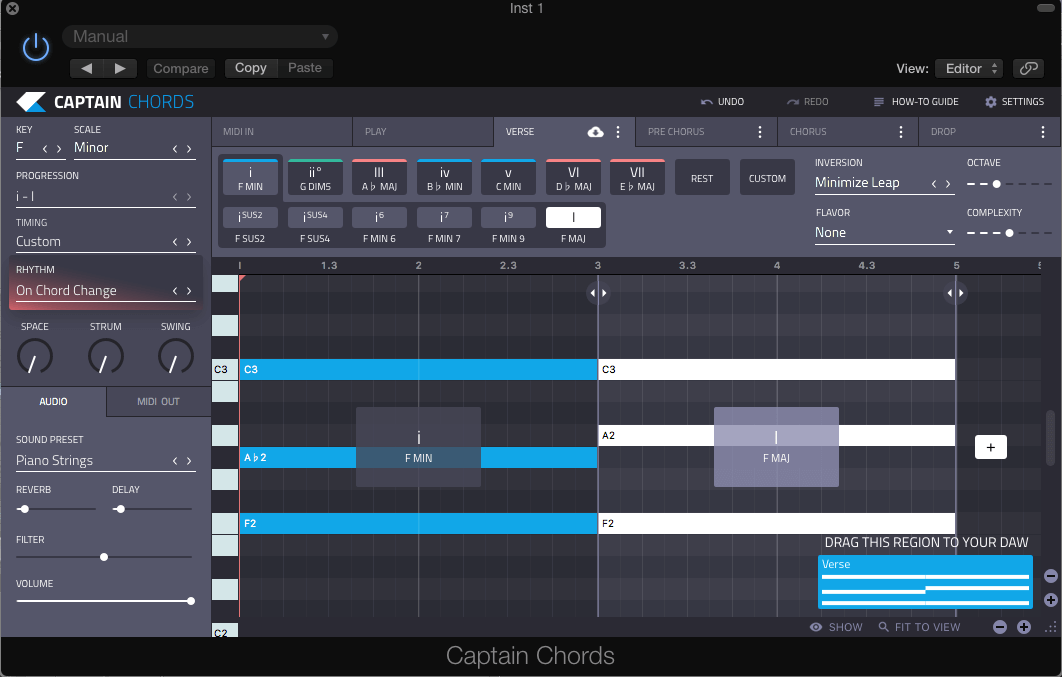





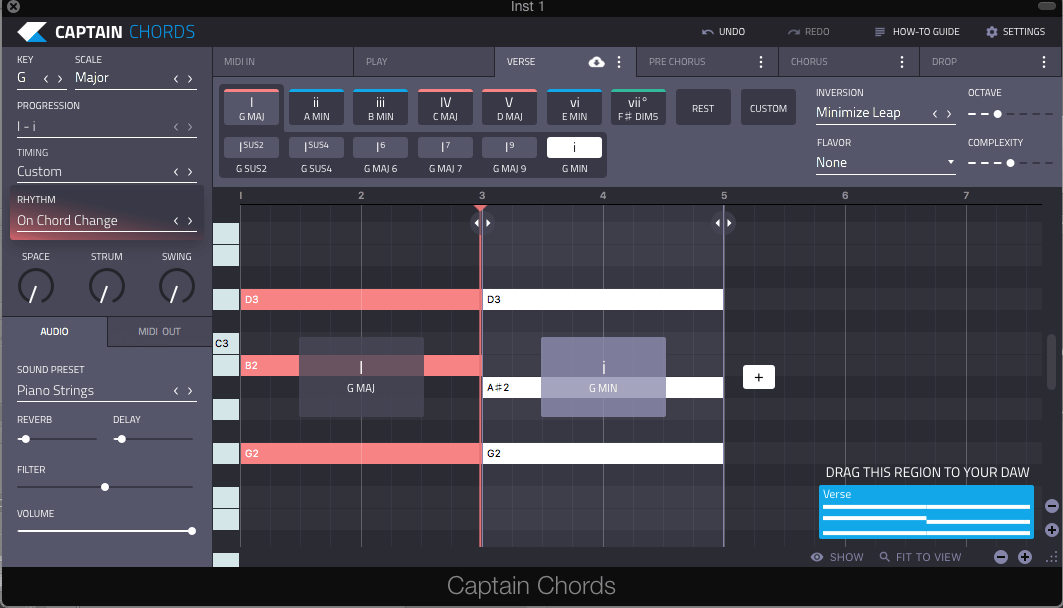

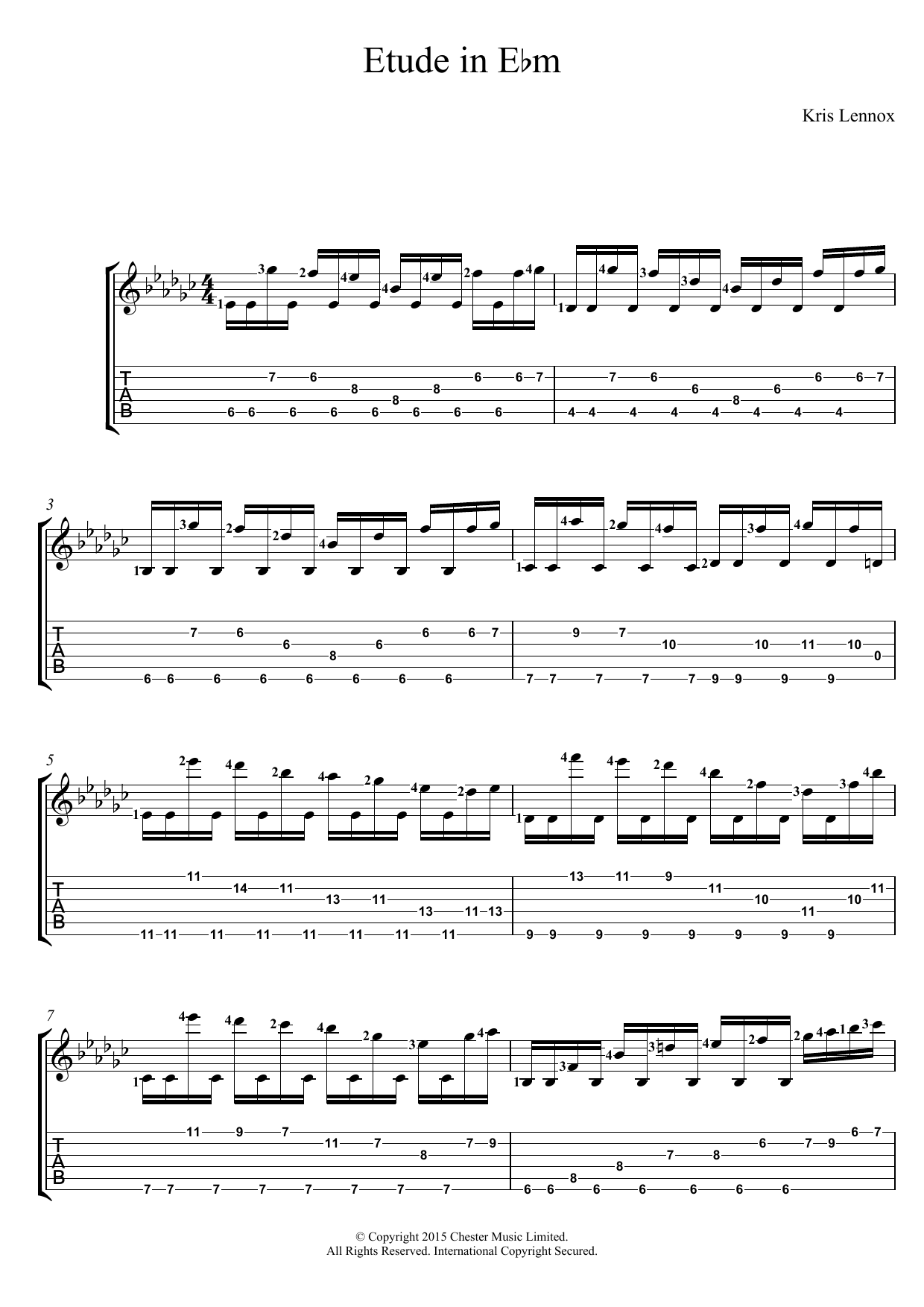




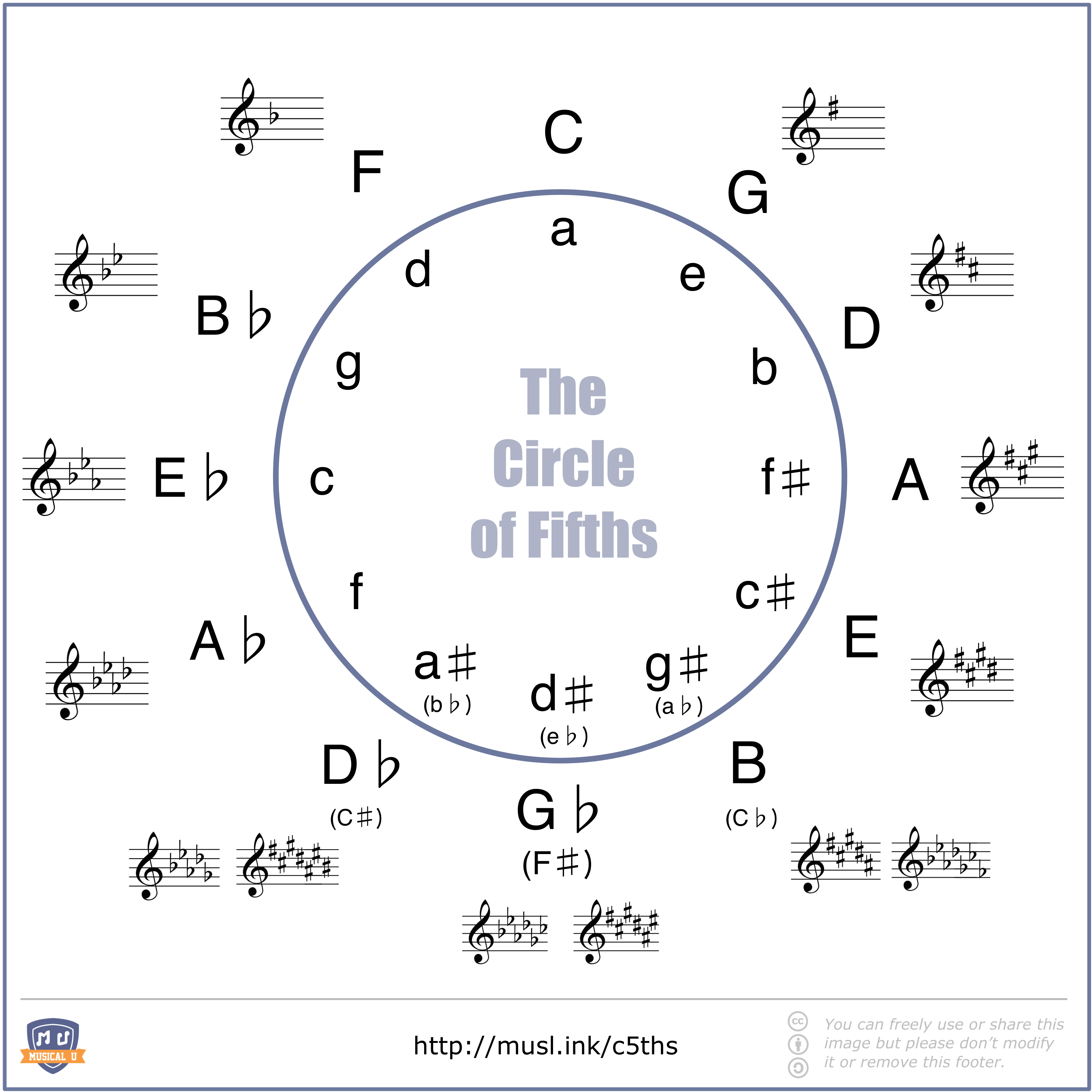









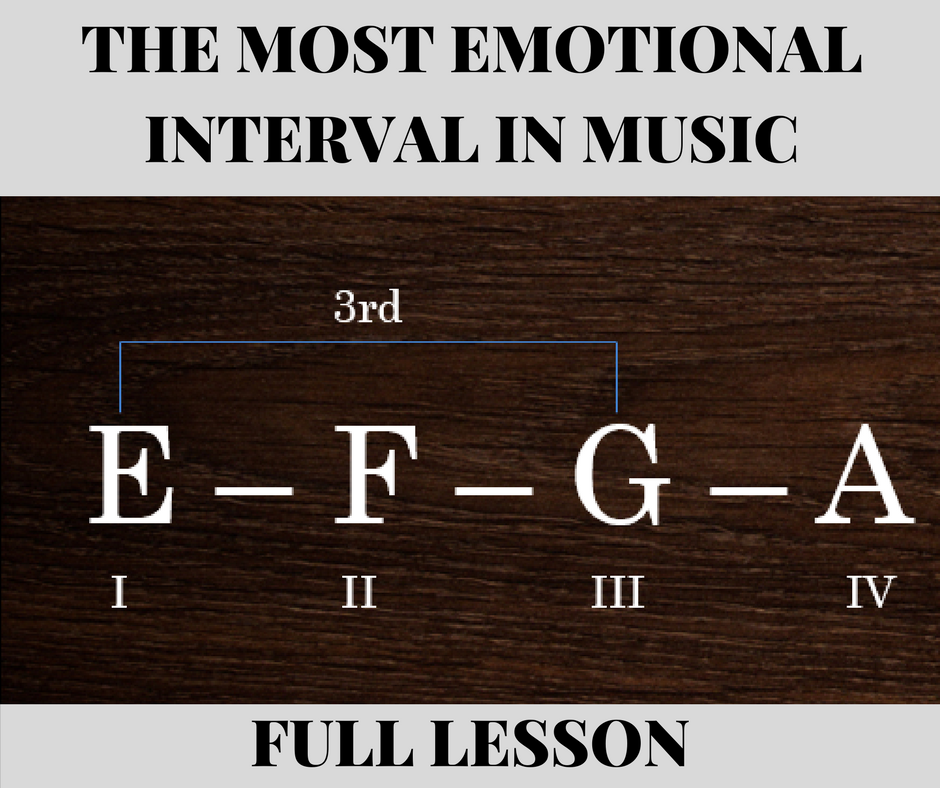

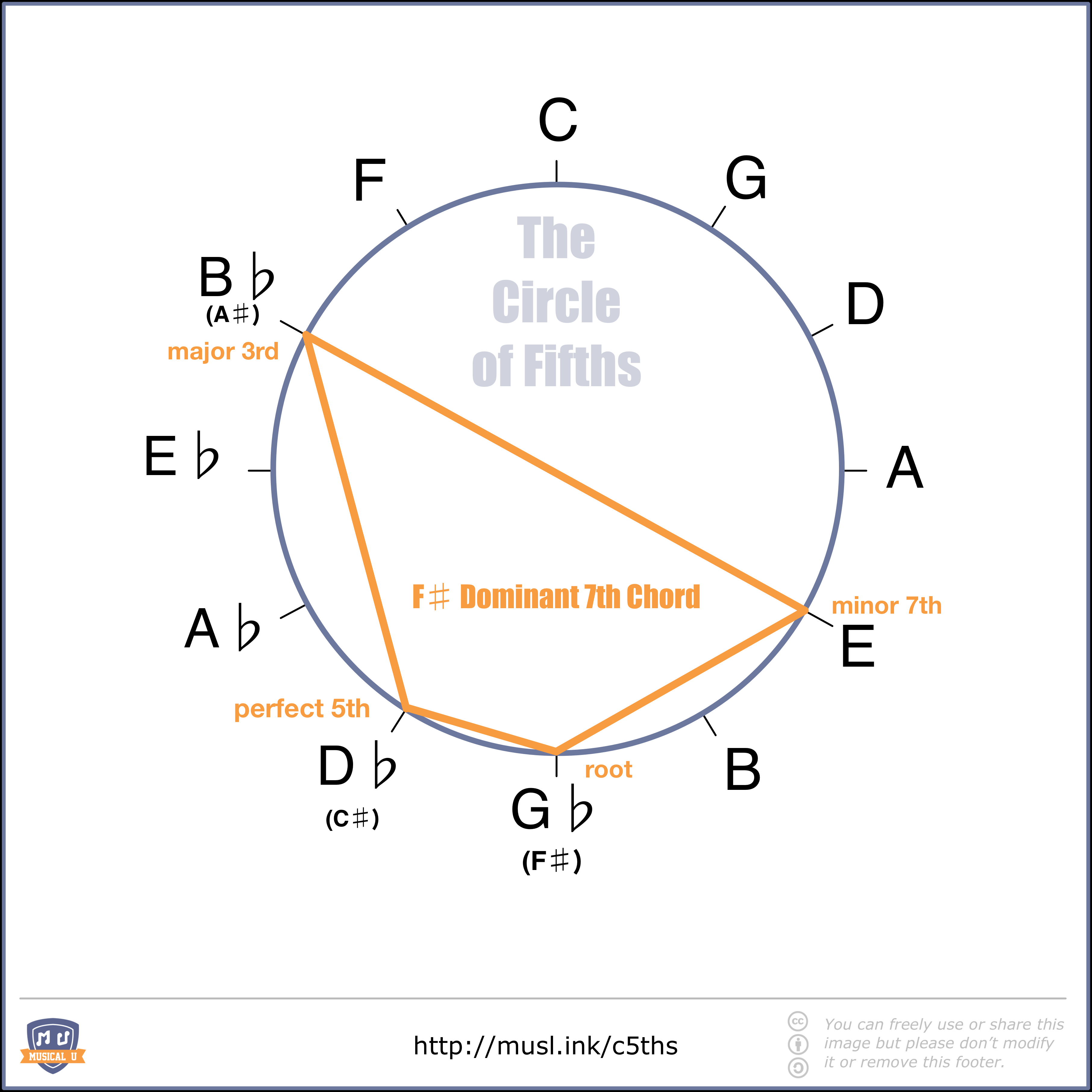

No comments:
Post a Comment
Note: Only a member of this blog may post a comment.